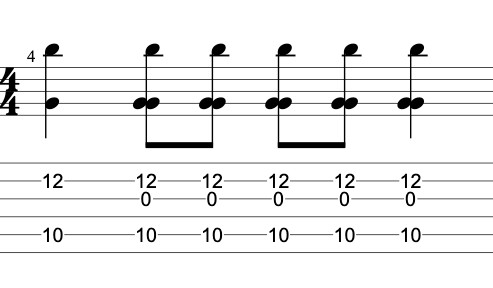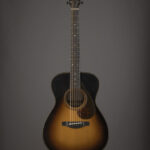“Blackbird,” a timeless classic by The Beatles, often feels like a Mount Everest for aspiring guitarists. Many online tutorials present it as an incredibly complex piece, leaving learners discouraged. Imagine spending 14 years trying to conquer this song, only to feel further away from playing it. This was the reality for one student until they discovered a simpler, more fundamental approach. Within just two days, they were playing “Blackbird.”
This transformation highlights the power of understanding core guitar principles and avoiding overly complicated, guru-driven methods. So, pick up your guitar, and let’s unlock the secrets of “Blackbird” chords and fingerstyle in this comprehensive guitar lesson.
The Story Behind “Blackbird”
“Blackbird” stands as one of The Beatles’ most beloved songs. Penned by Paul McCartney, and credited to the iconic Lennon-McCartney partnership, this enchanting acoustic track graced the world in 1968 on the legendary White Album.
More than just a melody, “Blackbird” is rich with metaphor and symbolism, resonating uniquely with each listener. Its universal appeal spans generations, touching hearts worldwide.
Often, “Blackbird” is seen as an anthem for the Civil Rights Movement in the US during the 1960s. McCartney himself has spoken about the struggles faced by African Americans during that era as a key inspiration.
However, there’s another layer to the song’s origin. In live performances, McCartney has shared that the initial guitar riff was sparked by the works of classical music giant, Johann Sebastian Bach. The opening guitar figure of “Blackbird” echoes Bach’s Bourrée in E minor, a piece both McCartney and George Harrison explored on guitar in their younger years.
The recording of “Blackbird” took place on June 11, 1968, at Abbey Road Studios. Uniquely, McCartney recorded this track solo. The rhythmic tapping heard throughout the song is McCartney’s foot, adding a personal, almost live dimension to the recording.
“Blackbird” has earned widespread acclaim as a masterpiece of McCartney’s songwriting. While never a single release, it became a standout track from The White Album and has been reimagined by countless artists across genres.
Rolling Stone recognized its significance by including it in “The Beatles 100 Greatest Songs.” McCartney has consistently featured “Blackbird” in his live shows, from the 1973 Wings tour to his ongoing solo performances, proving its enduring place in his repertoire.
Intriguingly, “Blackbird” also carries a subtle connection to the Beatles’ eventual split. Its creation, with McCartney recording alone, foreshadowed the increasing creative independence and growing distances within the band during their later years.
Ultimately, “Blackbird” is a shining example of McCartney’s exceptional songwriting talent.
If you’re eager to play this legendary song on guitar, the first question is often…
Standard Tuning for Authentic Blackbird Sound
While you might find live performances where Paul McCartney, particularly with Wings, plays “Blackbird” tuned down a whole step, the original recording and intended tuning is standard tuning. In the early days, McCartney would often perform “Yesterday” and “Blackbird” consecutively. Since “Yesterday” is played with a guitar tuned down a whole step, he would keep the same tuning for “Blackbird” for seamless transitions between songs.
More recently, when performing live, McCartney uses separate guitars for “Blackbird” and “Yesterday.” This allows him to play “Blackbird” in its original standard tuning:
- E (6th string – lowest pitch)
- A (5th string)
- D (4th string)
- G (3rd string)
- B (2nd string)
- E (1st string – highest pitch)
Understanding the tuning sets the stage for exploring the chords.
Decoding Blackbird Chords: Shapes, Not Complexity
To play “Blackbird” on guitar, you’ll encounter 15 chord names: G, Am11, G/B, C, A7/C#, Dadd11, B7/D#, Em, Eb, Cm, A7add11, D7sus4, Fadd9, Dmadd11, and Bb6.
This list might seem daunting, but the beauty of “Blackbird” lies in the simplicity of the chord shapes. Many of these chords are formed using just one or two fingers. The open strings ringing out in many of these shapes contribute to their extended names. Don’t be intimidated by the complex names; focus on the underlying shapes.
Let’s break down some of these chord shapes:
G: A classic folk-style G chord, using all six strings:
Am11: Played on strings 5 through 2:
G/B: Another chord played on the middle strings, frequently used as a walk-up chord in folk music:
C: This C shape is a movable shape that you’ll adapt throughout the song:
A7/C#: Resembles the G/B shape, but shifted up the fretboard:
Dadd11: Similar to the C chord shape, moved up to the 5th fret:
B7/D#: Following the pattern, another shape in this sequence:
Em: A beautiful minor shape at the 7th fret:
Eb: Simply lower the root note of the Em chord by one fret:
Cm: Like the G/B and Em shapes, but now in the 3rd fret position:
A7add11: Using just one finger:
D7sus4: Move the fretted note from A7add11 down one fret:
Take a moment to appreciate the simplicity. Despite the complex chord names, approximately 94% of these shapes require only one or two fingers. Don’t get lost in the theory; focus on mastering these simple shapes.
The true magic of “Blackbird” emerges from the strumming hand, specifically the clawhammer picking style.
These chords cover the verse. The final three chords appear in the chorus. Let’s explore those now:
Fadd9: Played in the 8th fret position:
Dmadd11: In the 5th fret position:
Bb6: At the 1st fret:
Looking back at all the chords, you’ll notice recurring shapes. “Blackbird” is built on shape-based patterns. Many of these patterns revolve around the interval of a tenth.
A tenth, being a compound interval, extends beyond an octave. Think of it as an octave plus a third. Understanding this interval helps to see the relationships between the chord shapes in “Blackbird.”
If navigating the fretboard for rhythm and lead feels challenging, consider exploring resources like fretboard guides to deepen your understanding.
With the chords under your fingers, let’s address the perceived difficulty of “Blackbird.”
Blackbird: Not as Hard as You Think
“Blackbird,” when taught effectively, is not an overly complex song. It’s even approachable for beginner guitarists. The key is in simplifying the approach.
You don’t need to memorize all the intricate chord names to play “Blackbird.” Paul McCartney himself likely wouldn’t articulate them in such detail. His approach is intuitive, moving simple shapes around the fretboard by ear.
Many guitarists play “Blackbird” beautifully for years without deep harmonic analysis. Detailed chord knowledge becomes more relevant if you’re improvising solos or arranging for ensembles. But for a solo cover, mastering the shapes and the picking style is paramount.
Focus on learning the chord grips – most requiring just one or two fingers – and combine them with the clawhammer picking technique. This combination is your key to unlocking “Blackbird.” If you’ve wondered if “Blackbird” is a beginner-friendly song, the answer is a resounding yes, when taught with the right simplified approach. Unfortunately, many instructors overcomplicate it, hindering student progress.
The Key of G Major and Chromaticism
“Blackbird” is primarily in the key of G major. However, Paul McCartney masterfully incorporates chromatic chords and walking bass lines, adding richness and movement to the harmonic landscape. While the song ventures beyond typical G major harmony, G remains the tonal center, the home key.
Understanding the key and chord structure leads us to the rhythmic heart of “Blackbird”: the strumming pattern.
Mastering the Blackbird Strumming (Brushing) Pattern
The rhythmic foundation of “Blackbird” is an eighth-note brushing feel. Think of these brushes as strumming patterns executed with your fingers. Strumming eighth notes means dividing each beat in a 4/4 time signature into two equal parts.
In 4/4 time, each measure has four beats. Subdividing each beat into eighth notes yields eight eighth notes per measure.
The counting for eighth notes is:
1 & 2 & 3 & 4 &
Where:
1, 2, 3, 4: On the beat eighth notes
&: Off the beat eighth notes
Counting it aloud sounds like: “One and, Two and, Three and, Four and.”
While this eighth-note feel is central, you don’t need to strum every eighth note constantly. Varying the rhythm by incorporating quarter notes allows the music to breathe and creates dynamic interest. Here’s an example of this style in notation and tablature:
 Blackbird strumming pattern example
Blackbird strumming pattern example
Conclusion: Unlock Blackbird’s Simplicity
“Blackbird” by The Beatles beautifully merges simplicity and depth, making it an accessible and rewarding song for guitarists of all levels. For those beginning their guitar journey, the secret to playing “Blackbird” lies not in wrestling with complex chord names but in grasping fundamental techniques.
By concentrating on the basic chord shapes and the characteristic clawhammer picking style, you can unlock the magic of “Blackbird.”
Keep practicing, and you’ll find this iconic song within your reach. Continue to explore and refine your guitar skills to discover even more musical possibilities.

